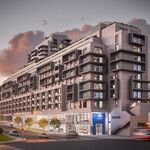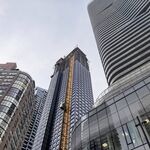Although I think the fares should be closer to TTC which would cause people to use the service. I do think at the same time there should be a slight premium to ride the GO. Emphesis on SLIGHT! The reason is that essentially GO would become the most desired service because it would be the quickest even over greater distances. For instance right now as a TTC supporter my list of transit modes from top to bottom is 1. SUBWAY 2. Streetcar 3. BUS (actually if I can walk Id prefer walking over the BUS)... In the future I always anticipated 1. SUBWAY 2. LRT 3. Streetcar 4. BUS/WALK.... In your system which sounds good on paper 1. GO 2. SUBWAY 3. LRT 4. STreetcar 5. BUS/WALK. I guess what Im suggesting is not only distance should be considered in price but also the quality of service. Example, if I ride a bus to ottawa its cheaper then a train which is also cheaper then a plane.
You are talking about pricing speed rather than distance directly. I would agree with that to a point. For example, if I could ride the Yonge bus from Union to Finch, why should I pay as much as a subway rider? This is why I have suggested that there be a flat fare for buses. And then a distance based add-on over the base fare for the rail network. That said, I would not want premiums for GO over the subway. Let people take whatever is fastest to get to where they are going.
As for GO becoming the primary system...Why should it matter? What's the big deal if GO becomes the primary system? Our goal should be to move people to where they want to go, not to defend one system as primary and the other as secondary.
Here's what would happen. The closer you get to the core the less things will change. If you're out in Scarborough or North York or Etobicoke however it's a different story. Out here, instead of a long bus ride to an East-West line to a North-South line, your commute will now be bus to GO station to Union or Summerhill (Crosstown GO hub) to Yonge subway.
This would cause the houses in walking proximity of GO lines to at least double in value... Im not saying thats a bad thing but let me know before implimenting this magical formula so I can buy some investment property.
There'd be plenty of warning. And several GO lines are already heading in this direction (Georgetown and Lakeshore for example). Aside from that, why should this be a big deal? Transit projects are announced all the time. Transit City would have raised property values a lot more than say a few areas around stations seeing larger property value increases.
Think the GTA's version of Berlin's S-Bahn system. It wasn't me who came up with GO-REX, someone on here mentioned it a long time ago. I just like the name because it's both catchy, and it describes it well.
I do believe Metrolinx themselves referred to such frequent heavy rail services as "regional express". The REX acronym maybe a UT thing though.
As for the pricing, I'd like to see it be $2.50 for subway or bus, and $3.00 for GO (token/Presto fare, cash would be higher).
I'd like to see $2 for bus if possible. But realistically without the subway network to draw on, bus fares would have to be recalibrated. I could see $3. There will have to be a debate on base fares for the subway (should they even be tied to bus fares at all?) The whole point of fare by distance is so that somebody downtown doesn't end up paying $3 to ride 4 stops. So either we set a very low base fare and a very high mileage rate or a higher base fare and a low mileage rate.
As far as I know there isn't a station at Sheppard West yet. But the adult fare from York University station to Union is $4.35. From Long Branch it's $4.30. So there is a small premium for GO Transit, but it isn't a huge difference.
I'd like to see fares based on real distances. So if from Sheppard West you went to Union, it shouldn't matter if you took GO or took the subway. This is the way to promote transit use. Make it easier for people to travel quickly.




